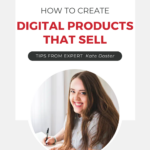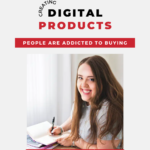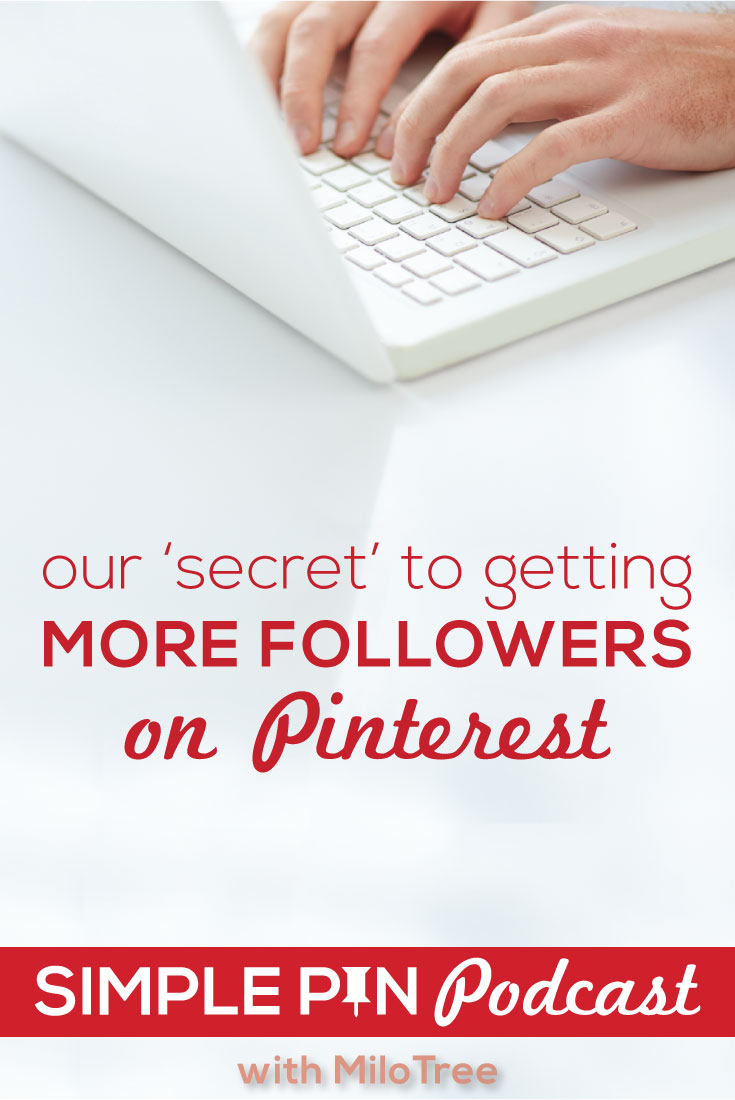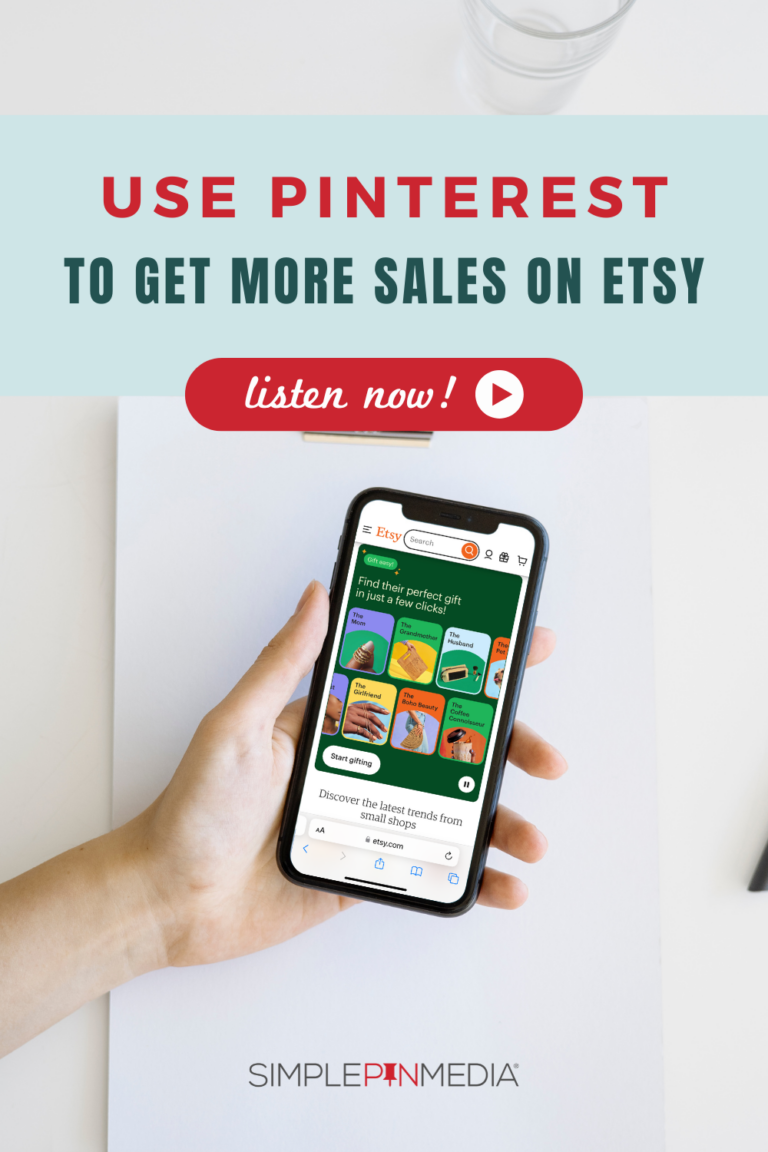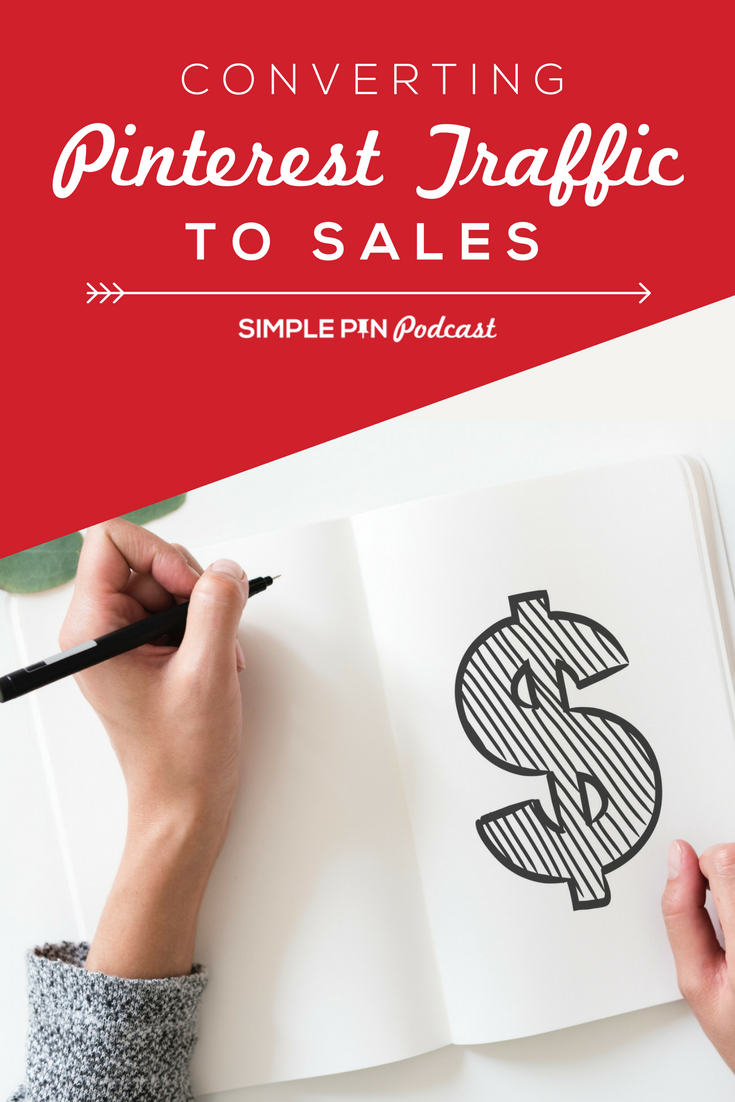There are a lot of spammers and shady characters out there trying to make a quick buck, but you probably aren’t one of them. You’re actually trying to make a living selling products you’ve spent time creating. There is nothing wrong with that!
Today, Kate sat down with Kate Doster, host of Do The Brave Thing: Online Business Podcast, to talk about creating digital products that people are addicted to buying. Doster has a ton of experience in selling digital products, and is passionate about helping good people make good money online. She works to take the really intimidating things, like putting yourself out there, writing emails to your customers, and creating digital products, and make them less intimidating and more approachable.
Let’s get into our conversation with Kate Doster.

Digital Products 101
Doster started her business journey as a copywriter, writing sales messages to email lists. She loved getting creative and figuring out ways to make her emails stand apart. Doster didn’t want her emails to annoy the readers, but wanted to find ways to draw them in. It’s proven that if someone is on an email list, they are more likely to buy from you than anybody else.
Doster shares there’s a difference between somebody who can create a good product and somebody who can market a good product. There are few who can do both, but it is possible to thread the needle between the two. Ideally, you want to market to your audience in an authentic way, and create a product that fills a need.
Make the Solution Fast and Easy
Give your clients what they want. Make it fast and easy for them. When it comes to marketing, ask yourself “is this going to help them get to a solution faster?” or “is it just going to give them another thing to do?”
As product sellers, Doster knows that it’s easy to worry that customers won’t be happy with your product. They’ll feel like it wasn’t worth the money. But the main goal should always be to get your client from point A to point B as fast and easy as possible. The less hoops to jump through the better.
So how do you fight the urge to overproduce? Focus on selling responsibly. Make all of your content, your promotional material, your sales page, your emails crystal clear. Who is this for? What is the problem this product is solving? Don’t leave any gaps.
A big mistake people make as product sellers is that they try to be everything for everyone. Let’s say your goal is to help a mom who needs to occupy her kid for a rainy afternoon. That is all you need to do. You don’t need to have printouts for every single holiday, you don’t need bonus activities for in the car. If all it is is coloring pages for a rainy day, you’ve accomplished your goal and made your customers happy.
Doster suggests we need to bring it all back to our marketing. Make it clear upfront whether this product is for a beginner or an expert. From there more opportunities open for you to have next steps. You can create a product for the next stage or problem. And the cool thing about offering different products is that you can sell them in a bundle, which we’ll dive into a bit later.
By being crystal clear from the beginning, you’ll eliminate the people who thought it was a waste of money. It probably wasn’t worth the money for them because they never should have bought it in the first place.
High vs low ticket Digital Products
In late 2022 and into 2023, Doster saw a shift in what people were willing to buy. The recession finally caught up and there were only two buyers in the market. The ones who would pay for smaller ticket items ($200 or less) for products they could learn from at their own pace; they could digest a little at a time. And you had those that were willing to pay upwards of $4,000 for individual coaching, and one-on-one experiences. There was no more middle ground. People were either willing to invest just enough to get started, or were all in and knew they could benefit from higher ticket items.
If you consider yourself a coach, and have the capacity, Doster suggest you turn your $2,000 course into a higher price. Add in the value that people who are willing to pay that much want; add in calls and reviews. Create a course or membership that is worth more, because there is a market out there for it. Or cut your $2,000 course into smaller pieces so people who can’t invest as much, still have an opportunity to learn and attain resources from you.
cREATe A diGITAL pRODUCT FOR yOU
It’s very easy in this online space to take a page out of someone else’s book. You might see someone doing something you like and try doing it the same way. But it doesn’t work that way. Everyone has different capabilities, schedules, systems, strengths and gifts. What works for one, most likely won’t work for the other.
Create a digital product that aligns with what you want and what you don’t want.
Create a digital product that serves your audience and yourself in the best of integrity.
Don’t create a product that you don’t have the time to devote to it. Don’t create a product you aren’t excited about.
A friendly reminder that you are allowed to have seasons in your life where you might not be able to keep up with a product you’ve created previously. That’s okay. It takes bravery to say goodbye or alter something, but what’s more important is giving your clients what they’ve paid for. Most likely you aren’t going to alienate your audience. Especially if you let them know what’s coming.
People have opinions. They’ll have opinions about what you’re doing and what you’re not doing, but it’s someone else’s opinion. So Doster encourages you to let that slide on by because it’s not important. Remember, you are creating a product that works for you. You’ll find the right audience, even as things ebb and flow.
tHINK sTRATEGICALLY
So what is the first step in creating a digital product? First, it comes down to pricing, what sort of business model you plan on having, and what stuff you love to do. These three things are foundational in determining what to sell, and how to market your products.
To have a small, low cost membership, you have to have a large enough audience. The bigger the price tag, the smaller the audience can and will be.
If you have a larger membership program that you are thinking might be time to break up, think strategically about it first. If you need to make money while you think about revamping things, what is something that’s easy to sell? Is there a template? Is there a bonus probably that’s already made that you can package up? This is a great way for the interim to still have money coming in while you revamp and take things apart.
When thinking about what you can offer in smaller portion sizes from your membership, figure out what part you loved the most. What part was easiest or most fun for you to teach? These are great places to pull things apart and offer in separate digital products.
making great digital products that people become addicted to buying
Creating a product that people become addicted to buying comes down to two things: marketing and content creation.
When marketing your product, people need to feel heard and understood. Doster offers a course called If You’ve Got 18 Tabs Open Right Now And Your Socks Don’t Match, This Is The Productivity Course For You. This captures the attention of people who fall in that category. They suddenly stop and think “yeah, that’s me”. The marketing aspect of this is showing people that you get them, and you’ve got something different for them.
People become addicted to buying your things when you get them a result. When someone buys something that actually works, they want more. They’re going to see what else you have. It’s also great when you can talk about other things you offer within your products. If you are selling a beginners course to Pinterest, that’s a great place to also mention your keyword planning guide.
Doster points our that what’s cool about being a digital product seller is that even if you are someone who wants to have a higher ticket item, you can offer entry level products. Those entry level products get people hearing your voice, while starting to get results. If they decide to invest more, you’ll be the first on their list of where to buy from.
Related: eCommerce Content Marketing
Bundles
Bundles are a great way to sell several of your products in a package together. There are two different kinds of bundles you may be interested in selling:
A self bundle – when you sell three or more workshops or templates at a discounted price for a limited time.
- You can bundle any former products you’ve offered, webinars, or current products.
- Example: three separate products would have been $100 total. For a couple of days, people can get all three of them together for a total of $75.
A collaborative bundle – when you get together with other creatives who serve your same audience and offer your products or free resources together for a limited time.
- These could be free or paid.
- These are great for growing email lists and getting more eyes on your content. The exposure is worth it alone.
- Example: A copywriter would team up with a graphic designer, someone who does Instagram, and someone who does course design. Everyone is going to throw in one of their digital products, either for free or for a discounted price.
Kate Doster has her own bundle coming up February 12th – February 16th: the Back To Business Bundle. Her team has been hosting them since 2019. This year is their biggest bundle ever, a hybrid bundle. There is both a free and a paid tier included in this bundle. The free tier will offer any item that a contributor actually sells on their website for $49 or less. The paid tier is $97 and will offer access to everything that’s free, plus an additional 77 courses and resources that sell for over $50.
Doster’s team has created roadmaps to help you narrow down what it is you actually need. Contributors are hosting hour long calls where you can go through the product with them, and you can ask any questions you may have. There will be panel discussions, a free pop-up Facebook group, and a bingo card with different prizes you can win by taking action.
The hope with this bundle is that it impacts more business owners, brings more growth, and helps new business owners who are just coming into the online landscape in 2024.
